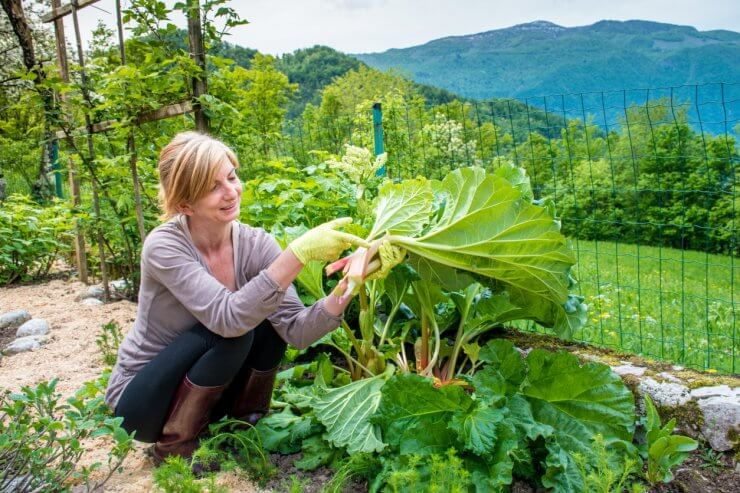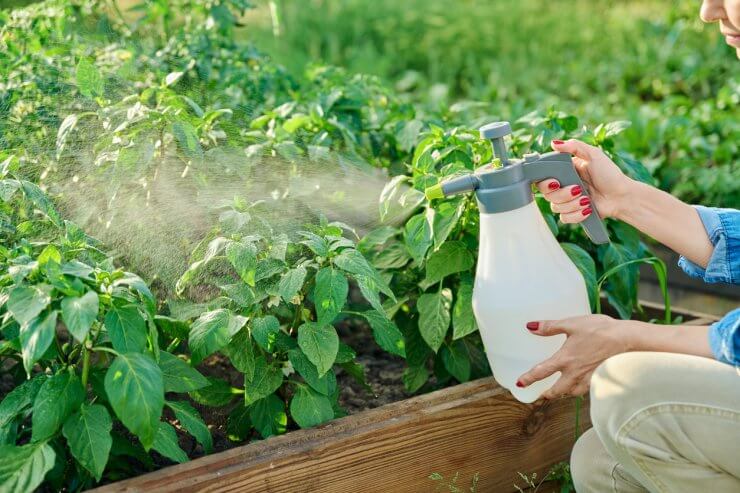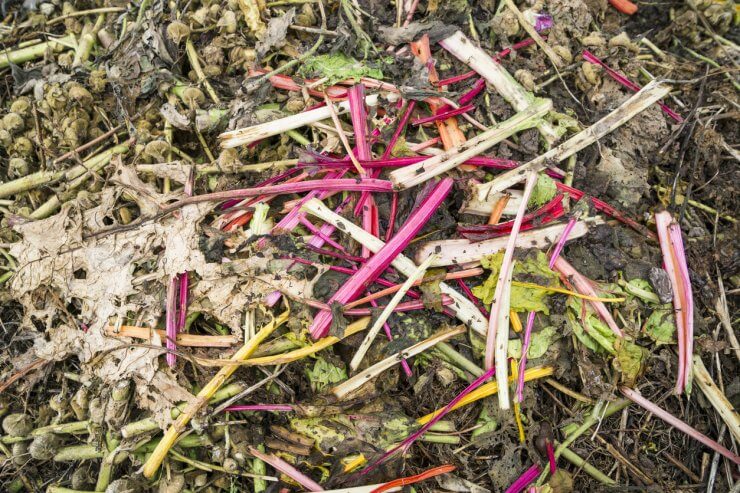
While many gardeners swoon over rhubarb’s ruby-red stalks and dream of homemade pies, this popular perennial comes with a catch that gives some of us pause. Sure, those tart stems make incredible jams, sauces, and desserts – but the leaves are a different story altogether. As someone with both a curious toddler and a dog who thinks everything is a potential snack, I’ve learned that rhubarb’s toxic leaves make it a no-go for my own garden. But for those braver souls who grow this classic garden favorite, understanding the science behind those poisonous leaves – and finding creative ways to use them safely – can help you make the most of your rhubarb patch while keeping everyone protected.
Why Rhubarb Leaves Are Toxic
Rhubarb leaves contain oxalic acid, a naturally occurring compound found in many plants but present in much higher concentrations in rhubarb foliage. Oxalic acid binds with calcium in the body, forming calcium oxalate crystals, which can contribute to kidney stones and interfere with calcium absorption. Ingesting large amounts of oxalic acid can lead to nausea, vomiting, diarrhea, difficulty breathing, and in extreme cases, kidney failure or death.
While rhubarb stalks also contain some oxalic acid, the levels are low enough that they do not pose a risk when eaten in normal quantities. Cooking does not break down oxalic acid, so boiling or baking rhubarb leaves does not make them safe for consumption.
Signs of Rhubarb Leaf Poisoning
Accidental ingestion of rhubarb leaves can result in:
- Mild symptoms: Stomach pain, nausea, or vomiting
- Moderate symptoms: Diarrhea, weakness, or difficulty breathing
- Severe cases: Kidney damage, convulsions, or coma
Although it would take a significant amount of rhubarb leaves to cause severe poisoning in an adult, small children and pets are more vulnerable and should be kept away from rhubarb plants. If you suspect rhubarb leaf poisoning, seek immediate medical attention or contact poison control.

Safe and Practical Uses for Rhubarb Leaves
Although rhubarb leaves should not be eaten, they can still be useful in the garden and around the home. Here are some safe ways to make use of them:
1. Natural Pest Repellent
The oxalic acid in rhubarb leaves can help deter pests from your garden. To make a homemade insect spray:
- Chop a few rhubarb leaves and place them in a pot of water.
- Simmer for 30 minutes, then allow the mixture to cool.
- Strain out the leaves and pour the liquid into a spray bottle.
- Apply to plants prone to aphids or other insect damage, avoiding edible parts.
Note: Avoid using this spray near children or pets, as the oxalates may still pose a risk if ingested.
2. Weed Suppressant and Mulch
Rhubarb leaves can be used as a natural weed barrier in garden beds. Simply lay the leaves over the soil around your plants to block sunlight and prevent weeds from sprouting. As they break down, they will also contribute organic matter to the soil. You might be wondering if this will make the soil toxic, and the answer is no. Oxalic acid is organic and biodegradable. When rhubarb leaves decompose in soil or a compost pile, microorganisms break down the oxalates over time. Unlike synthetic herbicides or heavy metals, oxalic acid does not accumulate in the soil, meaning it does not create a lasting toxic environment for plants.
If you’re using rhubarb leaves as mulch, spread them thinly and allow time for decomposition. Overloading a single area with too many leaves at once could cause temporary acidity changes, but this would balance out as decomposition progresses.
3. Composting Rhubarb Leaves
Despite their toxicity to humans, rhubarb leaves can be safely composted. Oxalic acid breaks down during decomposition and does not pose a risk to plants once the compost is fully matured. To speed up decomposition:
- Chop the leaves into smaller pieces.
- Mix them with other compostable materials like grass clippings, dry leaves, and vegetable scraps.
- Ensure proper aeration and moisture levels in the compost pile.
After a few months, the compost will be safe to use in your garden.
4. Natural Dye for Fabric or Paper
The tannins in rhubarb leaves make them an excellent natural dye. They can produce a range of colors, from soft yellows to deep greens, depending on the fabric and mordants used. To create a dye bath:
- Chop the leaves and boil them in water for at least an hour.
- Strain out the plant material and soak fabric or paper in the remaining liquid.
- Experiment with different mordants like alum or iron to adjust the final color.
5. Rhubarb Leaf Garden Paths or Borders
Since rhubarb leaves are large and durable, they can be used temporarily in garden pathways. Lay them along garden rows to prevent soil compaction and reduce weeds while they decompose naturally. Of course, don’t do this if you have pets who you think will eat them!

What Not to Do with Rhubarb Leaves
- Do not use them as animal feed – Rhubarb leaves are toxic to many animals, including pets, livestock, and wildlife.
- Do not juice or blend them – Even in liquid form, the oxalates remain dangerous.
- Do not assume small amounts are safe – While one bite might not be fatal, repeated exposure or large quantities can cause harm over time.
Rhubarb is a fantastic plant for the home gardener, providing delicious and versatile stalks year after year. However, its leaves should always be treated with caution due to their high oxalic acid content. While they should never be eaten, they can still serve a purpose in pest control, composting, fabric dyeing, and mulching. By understanding how to handle rhubarb leaves safely, gardeners can fully enjoy the benefits of this hardy perennial while keeping their households protected. If you want to learn more about growing rhubarb, check out our Rhubarb Gardening Guide.
Do you grow rhubarb? What have you done with the leaves?


 Previous
Previous

